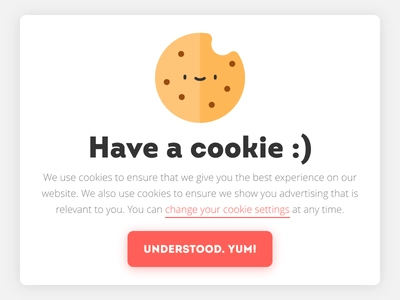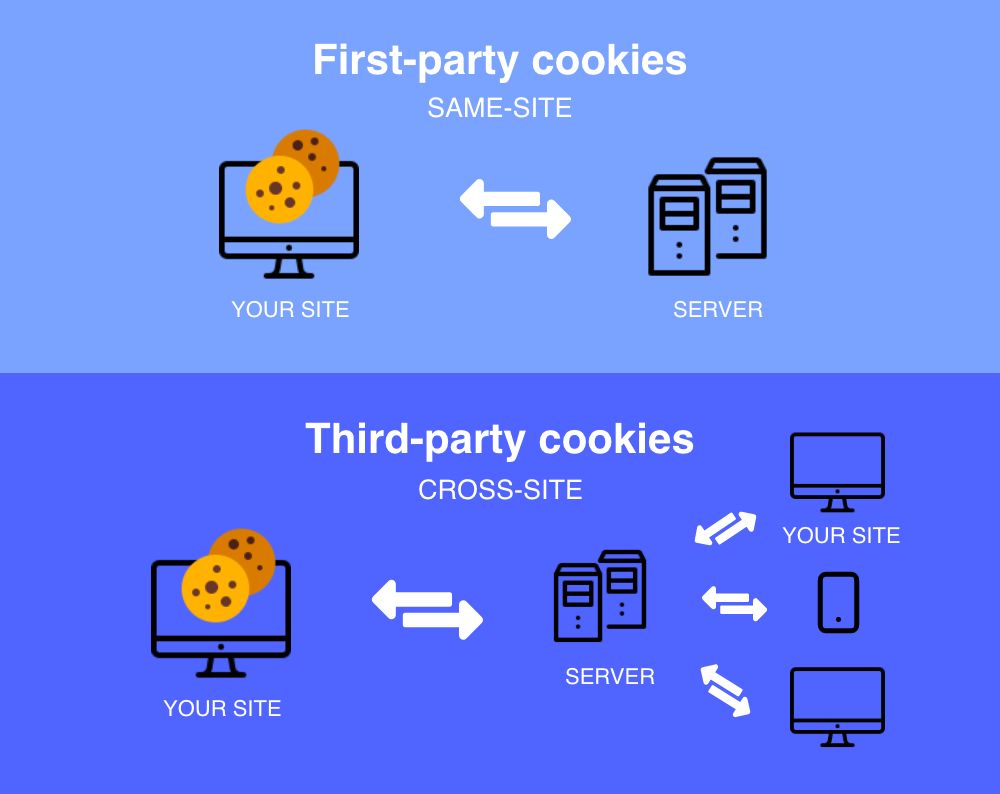“Have a cookie. Do you accept all the cookies or only functional and marketing cookies?” Sounds familiar? That’s right. We are talking about the cookie consent that pops up when you visit a website, hopefully also on your company website. Some of them more creative than others…

What exactly is a cookie?
A cookie is a small script that is stored on your website visitor’s computer or device. It collects small pieces of data – like username and password – to identify returning visitors. Cookies are often used to improve browsing experience. From remembering user’s login information to tailoring ads to their interests, cookies help make browsing faster, smoother and more personalized.

First-party vs third-party cookies, what sets them apart?
First-party cookies
First-party cookies are directly placed on a website by the owner or publisher of that website. These cookies are often used to improve user experience by remembering user preferences and settings. Think of shopping cart items, usernames, passwords and language preferences. First-party cookies store data hosted by your own website, not by others. That is why these are the cookies that you need to take extra care of in the future.
Third-party cookies
A third-party cookie shares data between your website and a third party. It collects user data for someone other than the owner of the website, e.g. the Facebook Pixel. This way enriched user profiles can be created to determine how information will be presented to the user. Third-party cookies are stored much longer and can be used to retarget visitors across domains and platforms.
Ever wondered why a pair of shoes you looked at online keeps showing up in ads on Facebook, Instagram, and other sites? It’s because of third-party cookies, which allow advertisers to target you based on your browsing history.
The end of third-party cookies
There is no way back. Third-party cookies are phasing out. Thanks to the GDPR regulation, customers have now more control over their own data. Several browsers have already decided to block third-party cookies and now Google has also announced that it will stop the use of third-party cookies in Chrome by the end of 2024. By blocking these cookies, customers are better protected in their online privacy and security. This is particularly important for customers who are concerned about their personal data being collected and used without their knowledge or consent.
What does this mean for your digital strategy?
Keep in mind that it will no longer be possible to track consumers’ online behavior across different platforms using third-party cookies. This change will likely have a significant impact on targeted advertising, as it will become more challenging to collect data on consumers’ preferences and interests.
Fortunately the end of third-party cookies is not the end of tracking. Digital strategies for retargeting will need to be reconsidered and it’s time to think about new ways to reach audiences.
Some digital strategies to consider:
First-party data: utilize first-party data, collected through various channels, including CRM systems and on-site behavior tracking to get a better view of your customer. By gathering and linking together key data points such as purchase history, email engagement, and device information, you can gain a comprehensive view of each customer as an individual. This enables you to tailor your marketing efforts to their specific needs and preferences, increasing the likelihood of a positive response and long-term loyalty.
Contextual advertising: focus on contextual advertising that delivers relevant ads based on the content of a website or app instead of the overall behavior profile. So when you are looking at your yoga blog, you see ads for yoga accessories and online trainings, and when you’re reading up on how to boost the email open rate of your newsletters, you see ads for relevant email automation platforms. The tools for contextual keyword advertising are available in Google AdSense, which allows you to place image, video, and text ads on the pages of participating sites online. This enables you to put dynamic content in front of people who aren’t necessarily searching for you.
Email marketing: build a strong email database and use email marketing to directly reach and engage your customers.
Content marketing: deliver premium content to collect contact information. Whitepapers for example can give you valuable information like a name and email address. Distribute valuable content to attract and engage customers, as well as to establish a relationship with them.
Be creative: many valuable data and insights aren’t tied to cookies at all. Interactions like email engagement, social network initiatives and even phone calls are all important sources of intent. Every single touch point you have with an individual is critical behavioral information that can help build stronger relationships with customers and increase loyalty.
In conclusion the end of third-party cookies might be a challenge, but it also creates new opportunities to focus on building stronger relationships with your consumers and engaging them through more direct and personalized communication channels. More than ever it will be important to stay ahead of your competitors by being more creative and strategic in how you collect and use data to reach target audiences.
Looking for assistance with your digital marketing strategy? Curious about how your organization can prepare for a cookie-free future?




